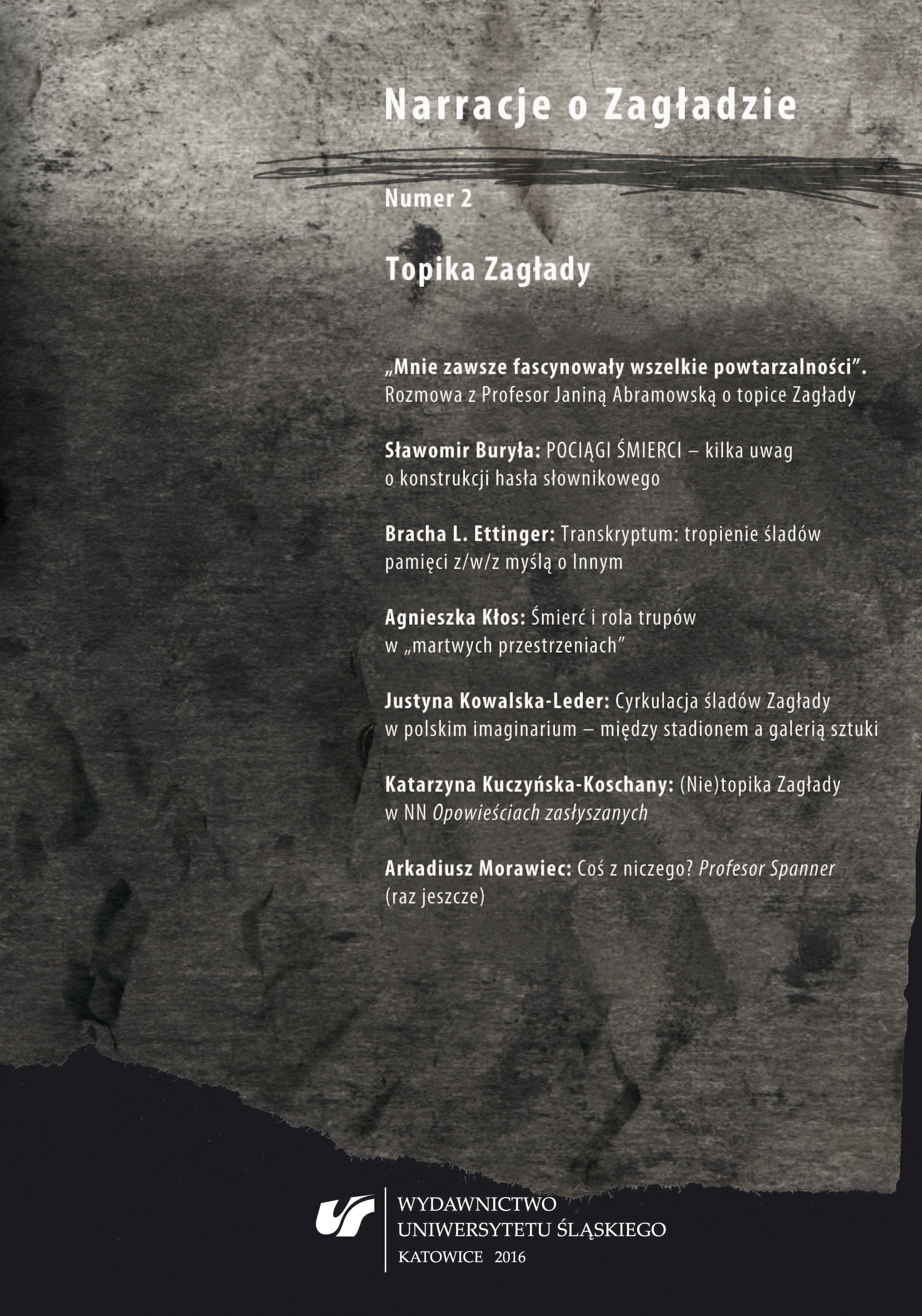Co stoi za stodołą? Przemiany toposu pojedwabieńskiego a topika Zagłady
What Hides behind the Barn? Metamorphoses of the Post‑Jedwabne Topos in the Context of the Topoi of the Holocaust
Author(s): Marta TomczokSubject(s): Language and Literature Studies, Fine Arts / Performing Arts, Studies of Literature, Polish Literature, Cultural Anthropology / Ethnology, History of the Holocaust, Film / Cinema / Cinematography, Theory of Literature
Published by: Wydawnictwo Uniwersytetu Śląskiego
Keywords: topos; image; pop culture; film; novel; intertextuality
Summary/Abstract: The author endeavours to develop and discuss the concept of a topos which would respond to the needs of the future dictionary of the topoi of the Holocaust. She starts with the summary of the historical understanding of the notion in Aristoteles, Cicero and Quintilian; then, she takes a closer look at the twentieth century conceptualisations, among others in Janina Abramowska and Berthold Emrich. Finally, the author discusses the descriptions of the topoi of the Holocaust in Sławomir Buryła, Władysław Panas and Paweł Wolski, examining how the category of the image and imagery functions in their works. The author assumes that imagery, realism, affectivity, emotional impact and being prone to changes in meaning are the distinctive features of the topoi belonging to the thematic area of the Shoah. In the second part of the article, the author analyses Szmul Wasersztejn’s account of the Jedwabne massacre, firstly extracting all the possible topoi from it, and then describing in detail the topos of the barn. In the final part of the article, the author proposes the analysis of three different examples of its use: in Michał Pilis’s “Łąka umarłych”, Kevin Vennemann’s “Blisko Jedenew” and Marcin Wrona’s film, “Demon”.
Journal: Narracje o Zagładzie
- Issue Year: 2016
- Issue No: 2
- Page Range: 72-87
- Page Count: 16
- Language: Polish

